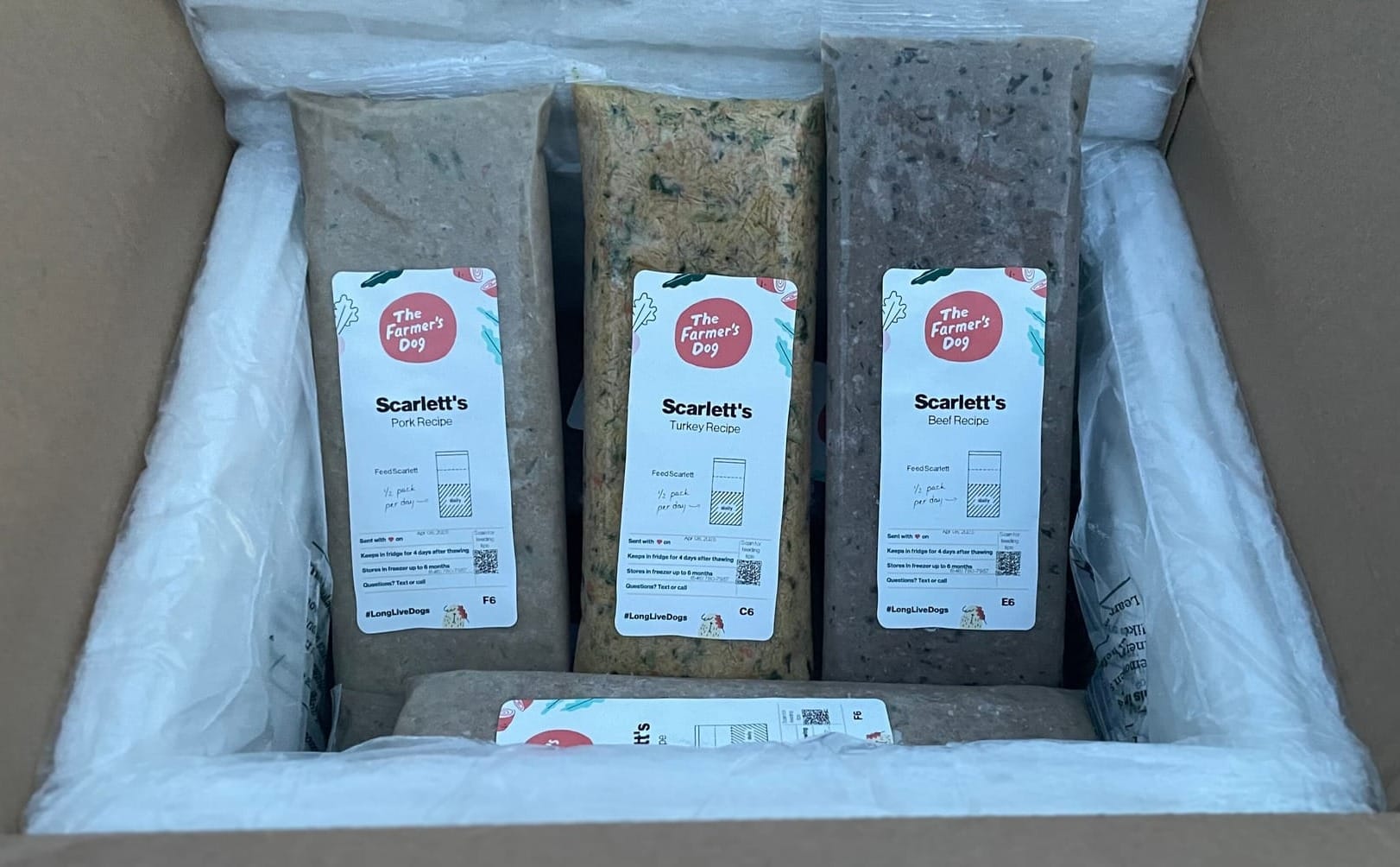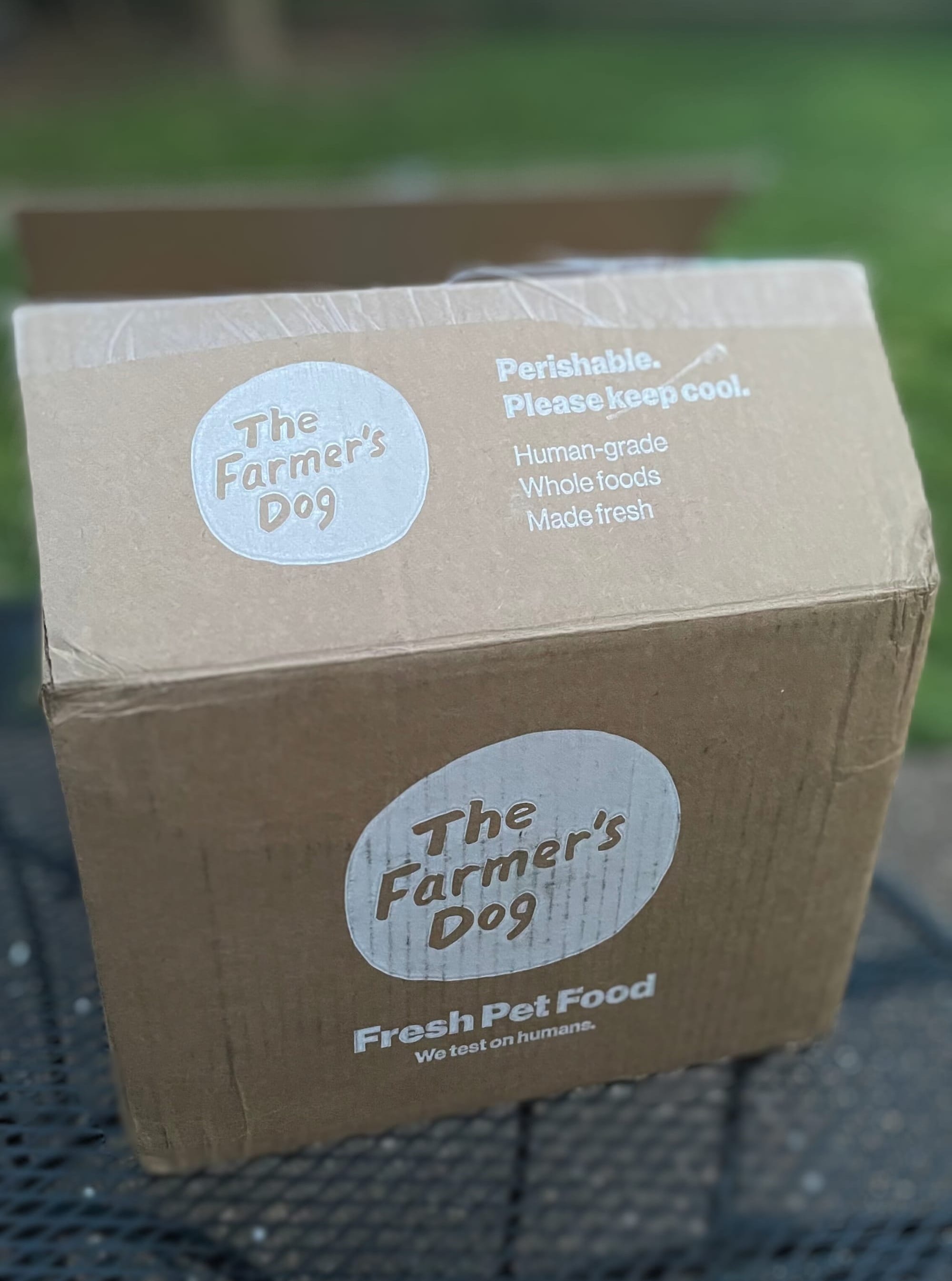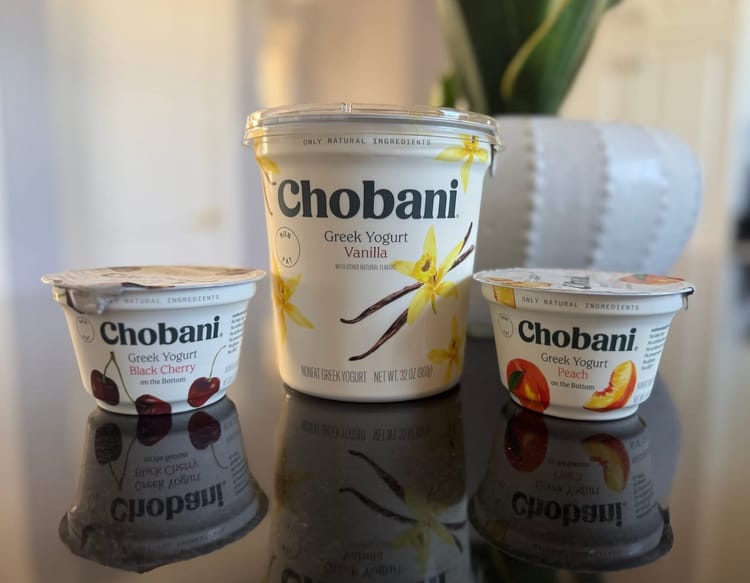The Farmer's Dog: From kitchen to kennel

Imagine trying everything possible to help your dog’s chronic health issues—expensive kibble, specialty diets, even the best vet recommendations—only to find no solution. This is exactly what Brett Podolsky faced with his Rottweiler, Jada, who was suffering from ongoing digestive problems. After some trial and error, Brett received advice to cook Jada's food himself. Brett began preparing simple, fresh meals for Jada, and within weeks, her health turned around. It wasn’t just a personal win; it sparked an idea.
Together with his friend, Jonathan Regev, Brett turned this breakthrough into a business, and The Farmer’s Dog was born. The pair set out to offer fresh, human-grade meals for dogs, creating a service that combined nutritional science with the convenience pet owners craved. Brett’s experience wasn’t unique. Many pet owners were becoming increasingly concerned about the highly processed, filler-laden dog food available on the market. As Brett and Jonathan looked into the pet food industry, they found disturbing truths—like carcinogens formed during high-heat processing and minimal regulation in the industry. They realized that if fresh, balanced meals could help Jada, they might be able to help many other dogs too.
Driven by this personal pain point and newfound purpose, they envisioned a fresh pet food service that would make freshly cooked dog meals easily accessible. It was significantly different than the norm of giant kibble bags on store shelves. They believed that by making it convenient and trustworthy, pet parents would embrace a healthier alternative. This conviction would prove to be one of their secret weapons in winning customer trust and loyalty.
With the idea in place, Brett and Jonathan started in the kitchen. They prepared fresh meals for dogs using meats like chicken, beef, and sweet potatoes—ingredients that looked more like a hearty stew than traditional dog food. They consulted veterinary nutritionists to ensure each meal was nutritionally balanced, including vitamins and minerals essential for dogs' health.

To test the concept, the founders gave their meals to friends and local New York dog owners. The feedback was very positive—dogs loved the meals, and owners reported shinier coats, more energy, and calmer stomachs. Encouraged by the success with Jada and the test group, the founders realized they had found product-market fit. By 2016, they had delivered over 100,000 meals and received a growing number of subscribers, proving the demand for a healthier, fresher alternative to traditional dog food.
Product-Market Fit
Product-market fit refers to the critical point at which a product satisfies a significant demand in the market. It occurs when a business's product aligns with customer needs so perfectly that consumers actively seek it out, find value in it, and are willing to pay for it. This alignment is the cornerstone of business growth and scalability. Achieving product-market fit means the company has validated its product’s value proposition and has a solid foundation to drive customer acquisition and retention. From a business perspective, it reduces the risk of wasted resources on ineffective marketing or product development. Without product-market fit, companies may struggle with poor sales, customer churn (customer stops interacting with the business), and inefficient use of capital.
The early days were scrappy and resourceful. Brett and Jonathan worked without any employees, preparing the food, packing it, and even delivering it personally around New York City. They bootstrapped the operations, keeping costs low and using feedback from customers to iterate quickly on their product and processes. This approach allowed them to perfect the service before expanding significantly, all while building a customer base that appreciated the personal touch.
In their first year, they were profitable locally, proving that there was real demand for fresh dog food. Their lean approach also meant they avoided the typical startup trap of scaling too quickly. Instead, they took their time to refine the product, improve logistics, and build out the business model.
Scaling a business around fresh, perishable food presented unique challenges. To maintain the freshness of the food during delivery, the company relied on cold-chain logistics—using insulated packaging and dry ice for cross-country shipping. Unlike the typical shelf-stable pet food products, they had to ensure that every delivery arrived in optimal condition.
Customization was another hurdle. Dogs have varying nutritional needs, and The Farmer’s Dog promised a personalized approach where meals were tailored to each pet’s age, weight, and health. Early on, the founders managed this with a manual system, but as the customer base grew, they needed technology to automate the process. The team began developing an algorithm that could accurately calculate portions and customize meal plans for each dog.
One more challenge was pricing. Fresh food was naturally more expensive than kibble, and persuading pet owners to invest in this premium product required the company to demonstrate its value. The Farmer’s Dog positioned itself as a high-quality alternative to processed kibble, emphasizing health benefits like improved digestion, longer life expectancy, and better energy levels for pets. It wasn’t just about feeding a dog—it was about investing in the dog’s health and longevity.
By 2017, The Farmer’s Dog had proven its viability on a local scale, and the founders were ready to expand. They raised $8 million in Series A funding to help accelerate growth and scale their operations. This influx of capital allowed them to build out larger production facilities and refine their logistics system to serve a national audience. Their goal was to make fresh, healthy dog food available to every pet owner across the United States.

By 2018, The Farmer’s Dog was operating across the country, expanding its customer base significantly. The subscription model helped the business thrive by providing consistent, recurring revenue, which gave them the resources to reinvest in growing the business. The nationwide rollout was a game-changer, and The Farmer’s Dog became a recognized name in the fresh pet food space.
One of the key elements to The Farmer’s Dog’s success was the way they built trust with their customers. Pet owners are highly protective of their animals, and convincing them to switch from traditional pet food to a premium, subscription-based service required a level of transparency that the big pet food companies couldn’t match. The founders’ authentic story, their emphasis on education, and their focus on quality helped to build a community of loyal customers.
The company maintained a personal touch throughout its growth, delivering meals that were specifically customized to each dog. Packaging included the dog’s name, and customer service was always available to help with any issues. This level of care and personalization created strong customer loyalty—pet owners who saw improvements in their pets' health weren’t likely to switch back to kibble.
In the years that followed, The Farmer’s Dog raised additional funding to fuel their rapid growth. They secured $39 million in Series C funding in 2020 and continued expanding their operations with new investments in technology and production. The company’s revenue skyrocketed as pet owners embraced the shift to healthier, fresh food for their pets.
As of 2023, The Farmer’s Dog is valued at over $800 million and continues to grow. The company has expanded its offerings, introduced new product lines, and is now a leading brand in the pet wellness space. The Farmer’s Dog’s commitment to fresh, personalized meals has made it a favorite among pet owners and has set a new standard for the pet food industry.
Works Cited
- The Farmer’s Dog Founders' Story. The Farmer’s Dog, https://www.thefarmersdog.com/digest/the-founders-story/#:~:text=discovering%20the%20alarming%20reality%20behind,existed%20for%20their%20own%20dogs.
- Subscription meal business The Farmer's Dog is for dogs only. New York Business Journal, 13 July 2016, https://www.bizjournals.com/newyork/news/2016/07/13/the-farmers-dog-subscription-meal-service.html#:~:text=The%20idea%20for%20The%20Farmer%27s,jobs%20and%20started%20the%20company.
- The Farmer’s Dog to use US$2 million in funding to expand. PetfoodIndustry, 13 July 2016, https://www.petfoodindustry.com/pet-food-market/article/15462478/the-farmers-dog-to-use-us2-million-in-funding-to-expand#:~:text=The%20Farmer%E2%80%99s%20Dog%20works%20with,of%20cooking%20to%20maintain%20freshness.
- eCommerce Success Story: Natural Dog Food by Farmer's Dog. OleoShop, https://www.oleoshop.com/en/blog/ecommerce-success-story-natural-dog-food-by-farmers-dog#:~:text=accompanying%20you%20for%20more%20time,Personalization%20justifies%20that.
- Founding Stories: How The Farmer’s Dog Came to Be. Sourcify, https://sourcify.com/founding-stories-how-the-farmers-dog-came-to-be-and-why-the-business-is-here-to-stay/#:~:text=This%20multi,term%20health%20prospects%20as%20well.
- The Farmer's Dog Shares its Pup-Filled Super Bowl Commercial. People, 13 Feb. 2023, https://people.com/pets/super-bowl-2023-the-farmers-dog-puppy-ad/#:~:text=For%20the%20first%20time%2C%20the,anticipated%20ads.
- Invest In The Farmer's Dog Stock. EquityZen, https://equityzen.com/company/thefarmersdog/#:~:text=,lives%2C%20and%20announced%20in%20March.


Member discussion